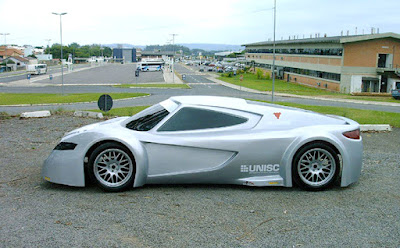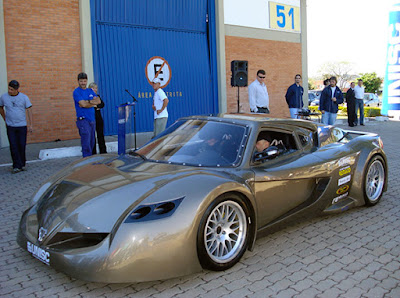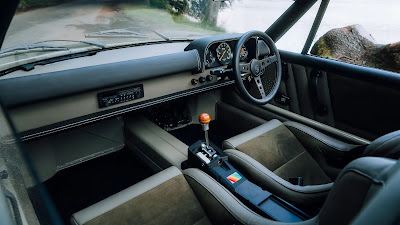PAY TRIBUTE - When an iconic product leaves a lasting impact on its fans, one of the best ways to keep that memory alive is through a tribute. This is exactly what DS Automobiles has done by unveiling its highly anticipated SM Tribute, a nod to the legendary Citroën SM. The Citroën SM, launched in the 1970s, earned its place in automotive history as a perfect blend of French elegance and Italian performance. It stood out with its aerodynamic design, innovative features, and the impressive Maserati V6 engine, becoming a symbol of excellence on the road.
 |
| The DS SM Tribute designed by DS Design Studio Paris, pays homage to the classic Citroën SM of 1970s while incorporating modern design elements that bring it into the future. (Picture from: Autocar) |
The new SM Tribute, designed by DS Design Studio Paris, pays homage to this classic while incorporating modern design elements that bring it into the future. This concept car imagines what the SM could have become if it had continued to evolve over the last five decades since its retirement in 1975. The result is a stunning reinterpretation that stays true to the original’s spirit but includes fresh, contemporary touches.
 |
| The classic and the modern stand side by side, with the Citroën SM on the left and the DS SM Tribute on the right. (Picture from: Autocar) |
At first glance, the sleek silhouette of the SM Tribute is immediately recognizable. It retains the long bonnet and distinctive rear quarter-panel design that made the original SM so iconic. However, DS Automobiles has added a modern twist with a unique bi-tone color scheme and large, aerodynamic 22-inch wheels. The Gold Leaf color from 1971 has been reintroduced, combining the nostalgia of the past with the sophistication of today’s automotive design.
 |
| A standout feature of the SM Tribute is its seamless blend of vintage charm and futuristic technology, highlighted by a 3D light-up screen on the front end that adds a layer of innovation to its striking design. (Picture from: Autocar) |
One of the standout features of the SM Tribute is its blend of vintage charm with futuristic technology. The front end now includes a 3D light-up screen, which adds a layer of innovation to the already striking design. Despite these modern updates, the essence of the original car remains intact. The proportions of the new SM Tribute closely match those of its predecessor, though it sits 35mm lower to enhance its efficiency. This low, sleek coupé with its sharply angled front end is both a tribute to the past and a look into what the future of luxury automotive design could be.
 |
| The new DS SM Tribute complimented with an aero-optimised bodywork and futuristic face nod to the original Citroën SM. (Picture from: Autocar) |
Stepping inside the SM Tribute, the connection to the past is even more apparent. The design of the interior pays homage to the original SM’s cockpit, but with significant modern enhancements. The dashboard has been reimagined, featuring a projection-based display that offers an immersive driving experience. In addition, the classic 1970s striped cushions have been reinterpreted to fit the contemporary design language, offering both comfort and nostalgia.
 |
| The interior of the new DS SM Tribute combines space-age technology with retro design cues, featuring a reimagined dashboard with a projection-based display that creates an immersive driving experience. (Picture from: Autocar) |
The retro design of the instrument cluster remains, but with updated technology that brings it into the 21st century. A curved gauge cluster, a projection display for the infotainment system, and a futuristic steer-by-wire steering wheel showcase the forward-thinking vision of DS Automobiles. The concept strikes a delicate balance between respecting the heritage of the Citroën SM while pushing the boundaries of what’s possible in modern car design.
 |
| The exterior of the new DS SM Tribute, adorned with Gold Leaf paintwork, showcases an unmistakable 1970s-inspired hue. (Picture from: Autocar) |
Thierry Metroz, the Design Director at DS Automobiles, highlighted the importance of this blend, noting how crucial it was to maintain the legacy of the SM while also providing a glimpse into the future of DS’s projects. This concept car is more than just a tribute; it’s a vision of what’s to come, reflecting the company’s commitment to honoring the past while innovating for tomorrow.
 |
| The new DS SM Tribute also features partially covered 22-inch rear wheels, a nod to the fully-faired spats of the original 1970s Citroën SM. (Picture from: Autocar) |
While the technical details of the SM Tribute remain under wraps, the concept car hints at the future direction of DS Automobiles. Although Maserati still produces a V6 engine and there is a close relationship between Citroën and Maserati, any production version of the SM Tribute is likely to embrace electric power. This aligns with the industry's shift towards more sustainable and environmentally friendly technologies.
 |
| The new DS SM Tribute, adorned with a swept-back C-pillar and wraparound rear screen, takes design cues from the Citroën SM that must have seemed otherworldly when it debuted at the 1970 Geneva Motor Show. (Picture from: Autocar) |
The debut of the SM Tribute at the Chantilly Arts & Elegance event was a fitting stage for such a prestigious reveal. It allowed DS Automobiles to pay homage to a legend while also setting the stage for its future endeavors. The SM Tribute stands as a testament to the brand’s dedication to innovation, luxury, and the rich legacy of its past. | ptjYFn6LwjQ |
 By blending iconic design with modern advancements, DS Automobiles has succeeded in not only preserving the memory of the Citroën SM but also in creating a vision of what the next chapter could hold. *** [EKA | FROM VARIOUS SOURCES | STELLANTIS | DS AUTOMOBILES | THESUN.CO.UK | CARSCOOPS | AUTOCAR | THEDRIVE | CARSALES.AU | HYPEBEAST ]
By blending iconic design with modern advancements, DS Automobiles has succeeded in not only preserving the memory of the Citroën SM but also in creating a vision of what the next chapter could hold. *** [EKA | FROM VARIOUS SOURCES | STELLANTIS | DS AUTOMOBILES | THESUN.CO.UK | CARSCOOPS | AUTOCAR | THEDRIVE | CARSALES.AU | HYPEBEAST ]Note: This blog can be accessed via your smart phone



































